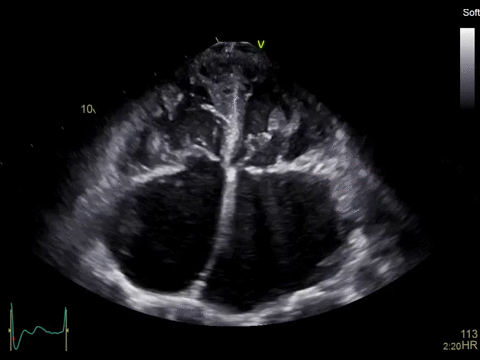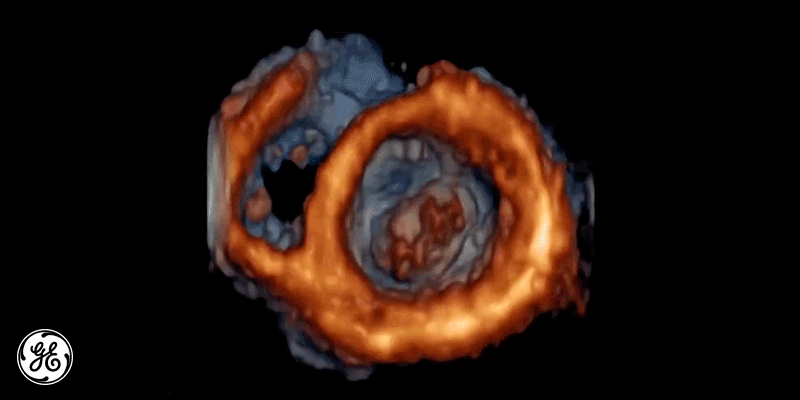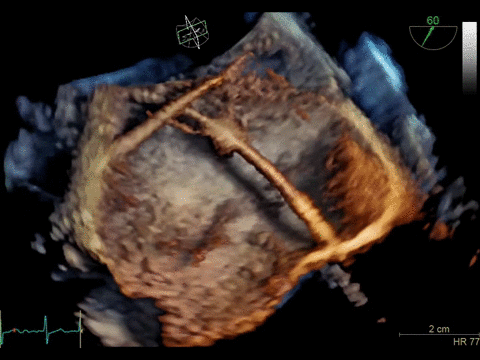GE Healthcare has released new footage from its three dimensional body scanners, marking its latest attempt to tap into the $32 billion heart failure market and potentially spare patients from invasive surgical procedures.
The software, dubbed cSound, processes a geyser of image data from an ultrasound, wolfing down the information equivalent of one DVD every second.
The real innovation, however, is not the number of pixels the software can lap up, but the pixels it carefully selects to put on display. Image scrubbing algorithms work over the picture like an automated airbrush, making shadows deeper, contours crisper and generally presenting a picture that’s easier on doctors’ eyes.
“It’s like opening the chest and seeing the heart beating” said Bijoy Khandheria, a cardiologist at Aurora St. Luke’s Medical Center, which is the first hospital to use the technology on patients.
As a result, a cardiologist can now peer into all four chambers of a beating heart…

Or rotate the view for a glimpse into two chambers from above…

Or zoom in further on the flapping leaflets of the mitral valve, which controls blood flow into the left ventricle. In this image, a bulge on the lower valve indicates a risk of heart failure.

They can also view their handiwork, such as these wires visibly running through the heart.

More Must-Reads from TIME
- Cybersecurity Experts Are Sounding the Alarm on DOGE
- Meet the 2025 Women of the Year
- The Harsh Truth About Disability Inclusion
- Why Do More Young Adults Have Cancer?
- Colman Domingo Leads With Radical Love
- How to Get Better at Doing Things Alone
- Michelle Zauner Stares Down the Darkness
Contact us at letters@time.com